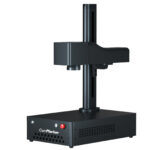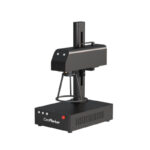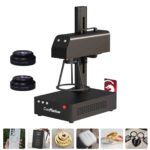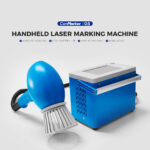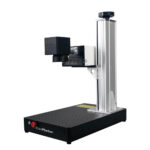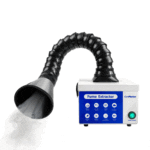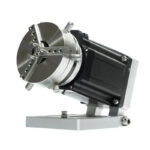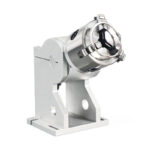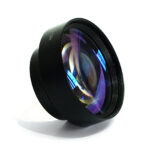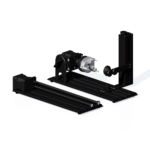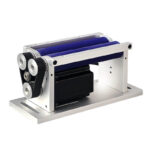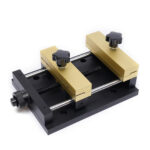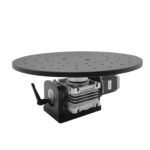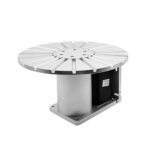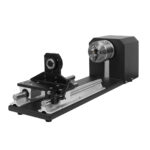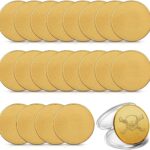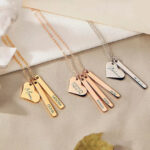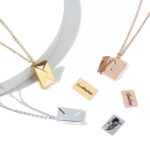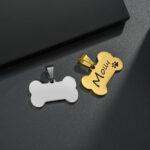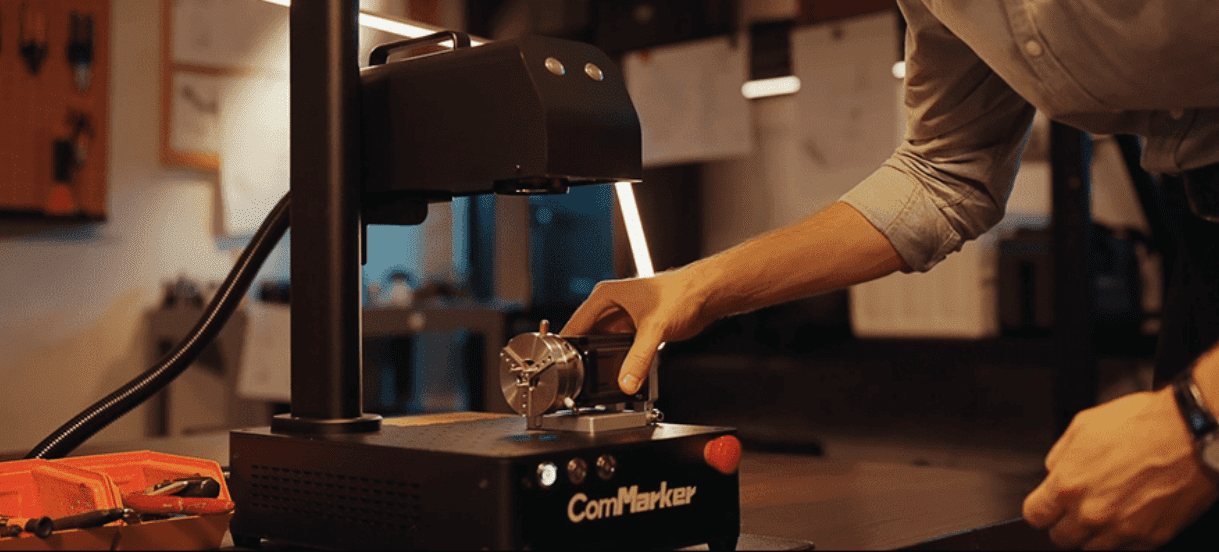Laser engraving is a widely used application that has shown remarkable resilience over recent years, with tremendous growth. Laser engraving involves carving a pattern onto a surface employing the beam of a laser. Personalization of consumer goods is a major use of this technology nowadays, as people prefer more customized products. Advertising, jewelry, and various other industries employ this.
Logos, initials, unique patterns, promotional branding designs, and countless other designs can be created through this. Since its introduction, laser printer sales have consistently increased, attesting to the product’s continued appeal. Small enterprises and multinational corporations alike may benefit from the precise marking and engraving of a variety of materials that fiber lasers make possible.
Increased demand and a speedier pace of innovation will lead to ever-more-productive laser engraving machines that provide a higher ROI. However, the best fiber laser is the one that is highly affordable and equally efficient. We recommend the ComMarker B4 for optimum usability. It creates precision cuts and offers a wide range of depths and wattage for various materials.
ComMarker B4 – 20W/30W/50W/60W/100W fiber laser engraver&laser marking engraver machine
B4 fiber laser engraver 0.01mm Precision 15000mm/s Engraving speed 20W Laser power ComMarker B4 fiber laser engraver 0.01mm Precision 15000mm/s
It is also important to know the sort of materials can fiber laser work on. For the reader’s convenience, we have created a detailed article below about all the materials that can be easily engraved using a fiber laser engraver.
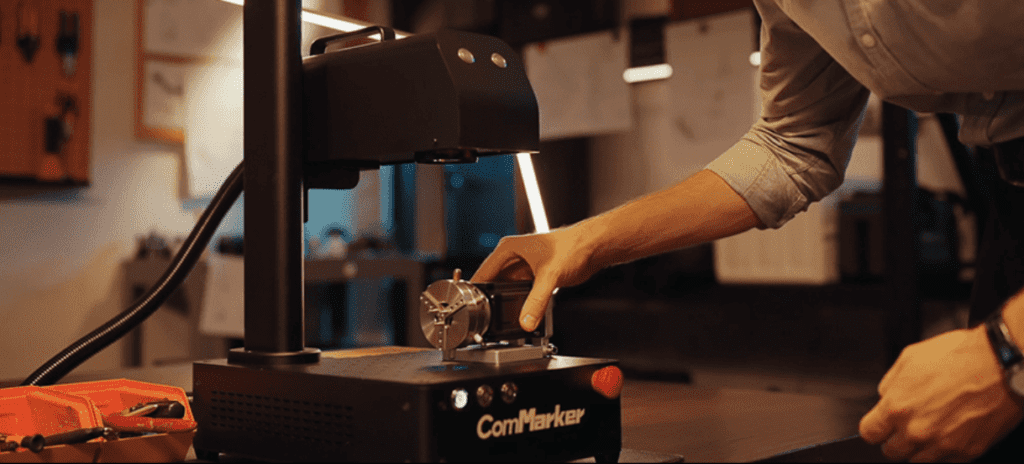
List of Fiber Laser-Engravable Materials
The prominent materials that are highly compatible with laser engraving through a fiber laser are elaborated in detail below:
1. Metals (Conductors)
Fiber lasers are now widely regarded to be among the most reliable marking options for metals. The substance is vaporized and cleaned in a predetermined sequence to leave behind permanent, deep markings. The method involves making small cuts in the target area.
The technique of sublimation is used here. It’s ideal for use in all kinds of manufacturing processes because of its high contrast and high-quality etches. Fiber laser engraving is used by manufacturers to print logos, code numbers, and designs into metal products. The 50 Watts ComMarker B4 comes in handy for metals in this regard, as it produces designs with 0.01 mm precision.
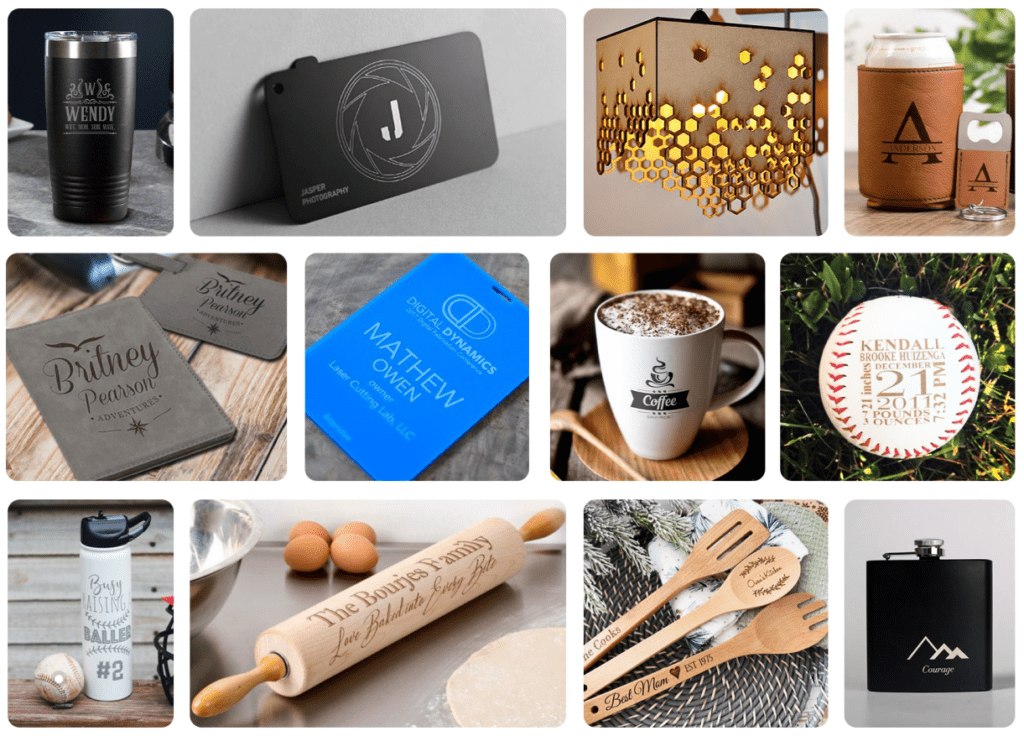
Some of the specific metals are mentioned below:
1. Stainless Steel
A material in demand in the POD industry is stainless steel. It comes in various grades which can be chosen.
- These easily absorb the wavelength of the fiber laser engraver.
- These offer 16 to 32-color engravings, depending on the grade and device used.
- However, it requires protection as engraving can cause corrosion in the long run.
2. Gold
The jewelry industry has long been utilizing fiber laser engravers machine to make intricate designs. Wastage reduction and precision are the top measures required to engrave gold. The 20 Watts ComMarker B4 offers both, creating highly customizable gold jewelry.
- Gold is easier to mark and does not oxidize while engraving.
- Vector Editing through laser engraver software such as LightBurn can help in making precise cuts.
3. Silver
Another industry that relies on fiber laser engravers for eye-catching design production is Silver. Precision cuts are achieved for the silver jewelry using a laser. Deep and shallow cuts can be easily created by this.
- Clean and consistent marks carvings are created using this laser with minimal product wastage.
- It is soft and highly reflective, which helps in creating great laser-etched designs.
- Silver is cost-effective for creating intricate designs without worrying about product loss.
4. Aluminum
Due to being lightweight and easy to mold, it is a part of various flexible manufacturing practices. It has low density, making it easier to absorb the fiber. A 50W ComMarker B4 is ideal for Aluminum engraving.
- It requires much less time to engrave, improving the POD industry’s workability.
- This works well with anodized or color-anodized aluminum, both.
5. Titanium
Titanium can be laser-marked with relative ease utilizing a 1.06-micron fiber laser. Surface oxidation from exposure to air during the laser’s engraving procedure ends in a dark-colored, often blue, imprint. A 50W ComMarker B4 can be used for Titanium.
- A low-speed setting should be employed for Titanium engraving.
- It is a non-contrast procedure. This causes no harm to the material underneath.
6. Brass
A 30W and higher output is recommended for engraving Brass. It is a copper-zinc alloy and can absorb 1.06 microns of fiber laser wave. Depending on the alloys, the markings can be different colored.
- This has high heat dissipation, making it ideal for engraving.
- Its high reflectiveness can only be encountered by a fiber laser to make clean designs.
7. Copper
Copper is high in demand for laser engraving because of its rustic look, conductivity, and malleability. A pulse duration of 10–20 nanoseconds is used to engrave copper, along with 100-200 mm/s of scan speed. Only above 50 Watts, ComMarker B4 can be utilized as copper is highly reflective.
- Fiber lasers are perfect to mark copper as they have cooling conduction which reduces its heating risks. This heat generation is essential for their structural uniformity.
- A low-speed setting is required to make unique patterns and designs on it.
mark
8. Chrome
With high corrosion resistance, chrome is the perfect metal to create customized products using a laser engraver. A high frequency is utilized in doing this. Plating thickness and laser power of above 50 watts are prerequisites for creating markings on chrome.
- The oxide layer of Chrome is of permanent nature. This generates high-contrast etches.
- Ensure that the fiber laser marking does not penetrate past the chrome plating, which can affect the metal directly.
1. Plastics and Polymers
Moving on to other non-conductor material compatible with laser engraving is plastic and relevant polymers. Printmakers for various SMEs use plastic as a favorite of theirs to create durable and budget-friendly personalized products. When plastics and polymers are exposed to laser beams for laser engraving, optical surface alterations take place.
The laser power required for plastics depends on the material thickness and type of polymers used. Usually, a low-powered laser is recommended for this, such as the 20W or 30W ComMarker B4.
- The materials that can be engraved include ABS, Fiberglass, Polycarbonate, Teflon, Nylon, PET, Delrin, Polypyrene, and various others.
- Due to having transparent nature, some plastics can be hard to engrave.
- Plastic can be engraved quickly to create precise carvings.
2. Rubber
Due to its inexpensiveness, flexibility, tear, and abrasion resistance, this is a well-regarded material for fiber laser engraving. Black rubber is usually the one used with a high absorption rate. The use of current laser engravers allows for the efficient, low-cost, and safe processing of rubber.
- A medium output power such as that between 20–80 Watts is optimum for rubber etching.
- For engraving rubber, such as that used in the ComMarker B4, a focus lens with a focusing range of 0.5–1.0 mm is commonly utilized.
3. Leather
Made up of synthetic polymers, leather requires a low laser power starting from 20 Watts to engrave it. Cowhide, lambskin, and synthetic leather are the most commonly used materials in this aspect.
- Leather’s natural viciousness may make it challenging to achieve a precise cut, especially on thin materials.
- Hard leathers, mostly made of natural animal skin, can be engraved beautifully. If it is artificial soft leather, the engraving effect is not as good
4. Coated Wood
Another material that is highly requested for surface engraving in the Print-on-Demand industry is wood. Customization goods are created through this. The optimal method involves setting the intensity of the laser low and adjusting the speed to get a print on the painted surface of wood materials.
- Lighter-colored coated and painted wood can be engraved more easily than dark-colored wood.
- It doesn’t work well on natural wood without coating
How to engrave on a Material with a Fiber Laser Engraver?
Here is how to easily engrave on any material without extra residue and accurate cuts.
- Utilize a high-quality laser engraving machine. In this case, our recommendation is the ComMarker B4 with different settings and outputs for different materials.
- Next, it is essential to clean the upper surface of the material which is to be engraved. This is to reduce the residue and etch a clean design without any hindrance.
- You can move the setting from low to high-powered, depending on the reflectivity of the material. For example, for copper, with a highly reflective nature, use a higher power setting.
- The optimal focusing point is achieved by raising or lowering the laser head till all three red light points intersect. This value is determined by the eye, and since laser types and field lenses vary, the focal length of every device is unique.
- Next, adjust the laser settings. The laser’s intensity, speed, and frequency may all be adjusted through its settings. Modifying these settings will allow you to get the intended outcomes.
- You may modify the angle of the overlapping lines by adjusting the hatch mode. Although 45 degrees is the standard for the hatch mode, you can experiment with it to get some interesting results.
- The line mode may be used to make a single, continuous line in the carving space. The space between lines is adjusted by the line mode option. The line mode’s standard measurement is 0.1 mm, however, you may change it to achieve alternative styles.
- After that, do the marking test with the desired object within the material restrictions. Use a cut-proof mat below the laser area for safety.
- A safety precaution is to use industrial-scale glasses while performing the whole process.
Concluding Note
Laser engravers are popular due to their effectiveness in engraving a variety of materials without manual exertion. With different materials, different speeds and power is required to make the desired design. ComMarker B4 is an all-rounder as it offers an affordable option for SMEs to engrave a wide variety of substances. We hope this article was of maximum help to you.

